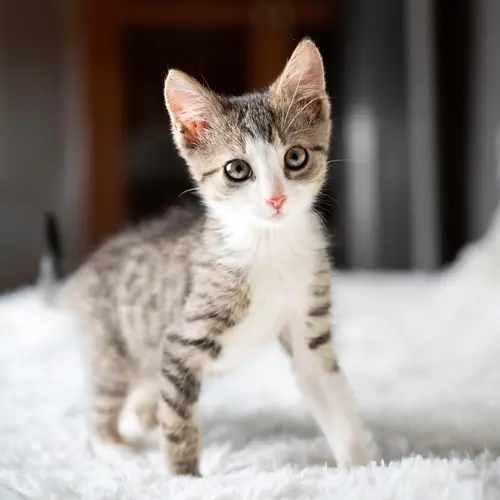A fiddler crab is a crab species from the genus Uca. They are native to brackish environments, which are made of part freshwater and part saltwater, all over the world. Fiddler crabs get their name from their claws that are shaped like fiddles.
Fiddler crabs are low maintenance and are usually kept in small to medium-sized aquariums. They are fun pets to watch and can live for up to ten years. Once you understand the basics, taking care of your fiddler crab is easy.
Fiddler Crab Care 101
Owning a fiddler crab is easy and fun. However, there are a few items you need to have and facts you need to know before you go out and buy your first crab. Before you buy a fiddler crab, you need to first set up a small aquarium or box to put them in when they arrive at your house.
Start with a container. You can either use a glass aquarium or a clear plastic box. It’s important to have a clear container so you can watch the crabs from any direction, even as they burrow in the sand. A good rule of thumb for not overcrowding your crabs is to only have between six and eight crabs per ten gallons of space available in the aquarium. Also, make sure you buy an escape-proof aquarium or that it has a sealed lid on it.
Obtain some sand. The next step to set up your crab habitat is to put sand at the bottom of the aquarium. Fiddler crabs live in the sand in the wild. Many pet stores offer several different types of sand, but the healthiest sand for your crab is wet sand you can find at the beach. This sand is the closest to your crab's natural environment and it will contain the food they would eat in the wild.
Create a slope with the sand. Whichever sand option you decide on, make sure you have enough to make a sand slope covering most of the aquarium’s bottom. Once you have the sand, make a gradual slope covering two-thirds of the bottom of your aquarium. The sand slope should create an area where the crabs can be above water or in the water if they choose.
Make the brackish water. Fiddler crabs live in part saltwater, part freshwater environments. You will need to make special salted water for them in order to mimic their natural environment. Do not use table salt. You can use tap water that has been left out for at least 24 hours, spring water, or water that has been dechlorinated. You will then add enough aquarium salt into the water to make the specific gravity of the water between 1.005 and 1.010. To test the specific gravity of your water, you can purchase a hydrometer at your local pet store.
Add decorations. Once you have taken care of the water and sand, you may add decorations to your crab’s aquarium. Things like plastic plants, live underwater plants, wood, or other decorations you like are great options.
Filters and heaters. To keep the aquarium clean, you can use a filtration system, which can be found at your local pet store. You can also purchase a heater for the aquarium to make sure the temperature inside stays between 75 and 85 degrees Fahrenheit, the most comfortable temperature for a fiddler crab. While both of these items are helpful, they aren't necessary for your fiddler crab.
Feeding fiddler crabs. Fiddler crabs are scavengers in the wild. You can feed fiddler crabs shrimp pellets, worms, tadpole pellets, flake fish food, hermit crab food, or crushed dry cat food. Fiddler crabs need to be fed daily. Once in a while, you can feed them tiny pieces of vegetables or crushed eggshells.
Cleaning your fiddler crab’s aquarium. If you have a water filter, be sure to change half of the water in your aquarium once or twice a month. If you do not have a filter, change the water once a week.
Things to Watch Out For
You should handle your fiddler crabs very rarely, if at all. Being touched or held causes them stress, and they might pinch you. If you do have to handle them, make sure to wear gloves and wash your hands really well after touching them.
Fiddler crabs will molt, meaning their exoskeleton will fall off. This is completely normal, and if this happens, it's important that you leave the crab alone.
Also, female crabs might lay eggs but do not worry. The eggs will not hatch. There has been no known successful breeding of fiddler crabs in human care.

